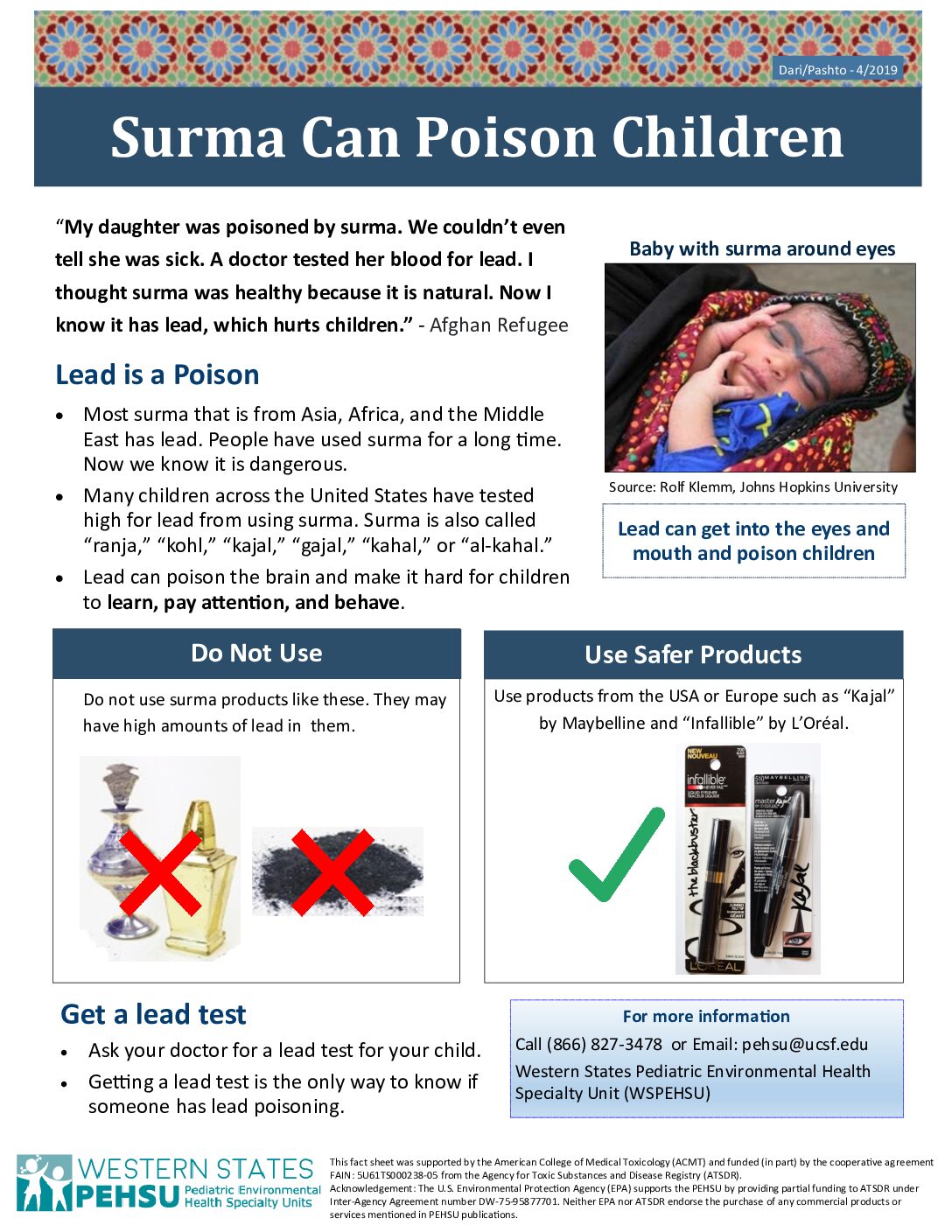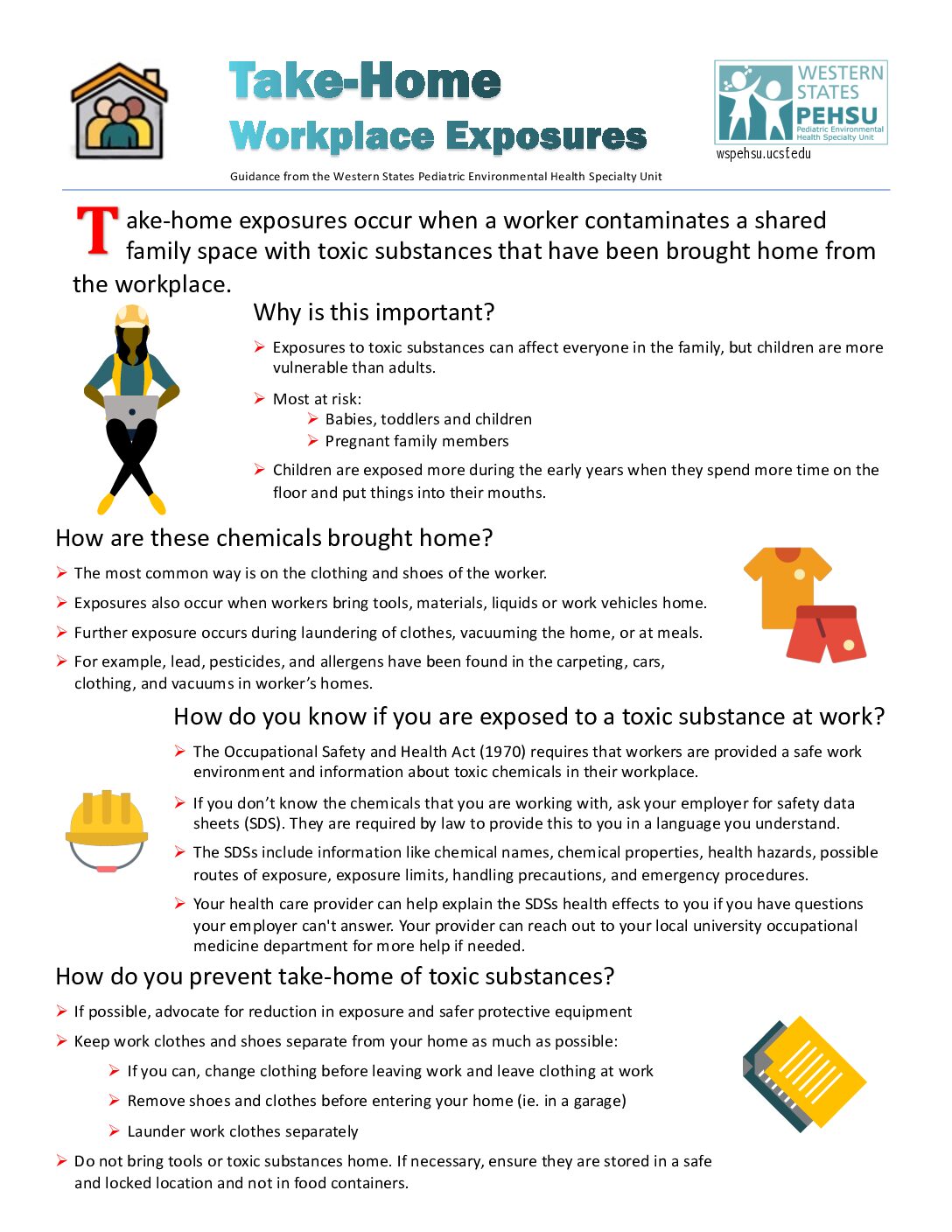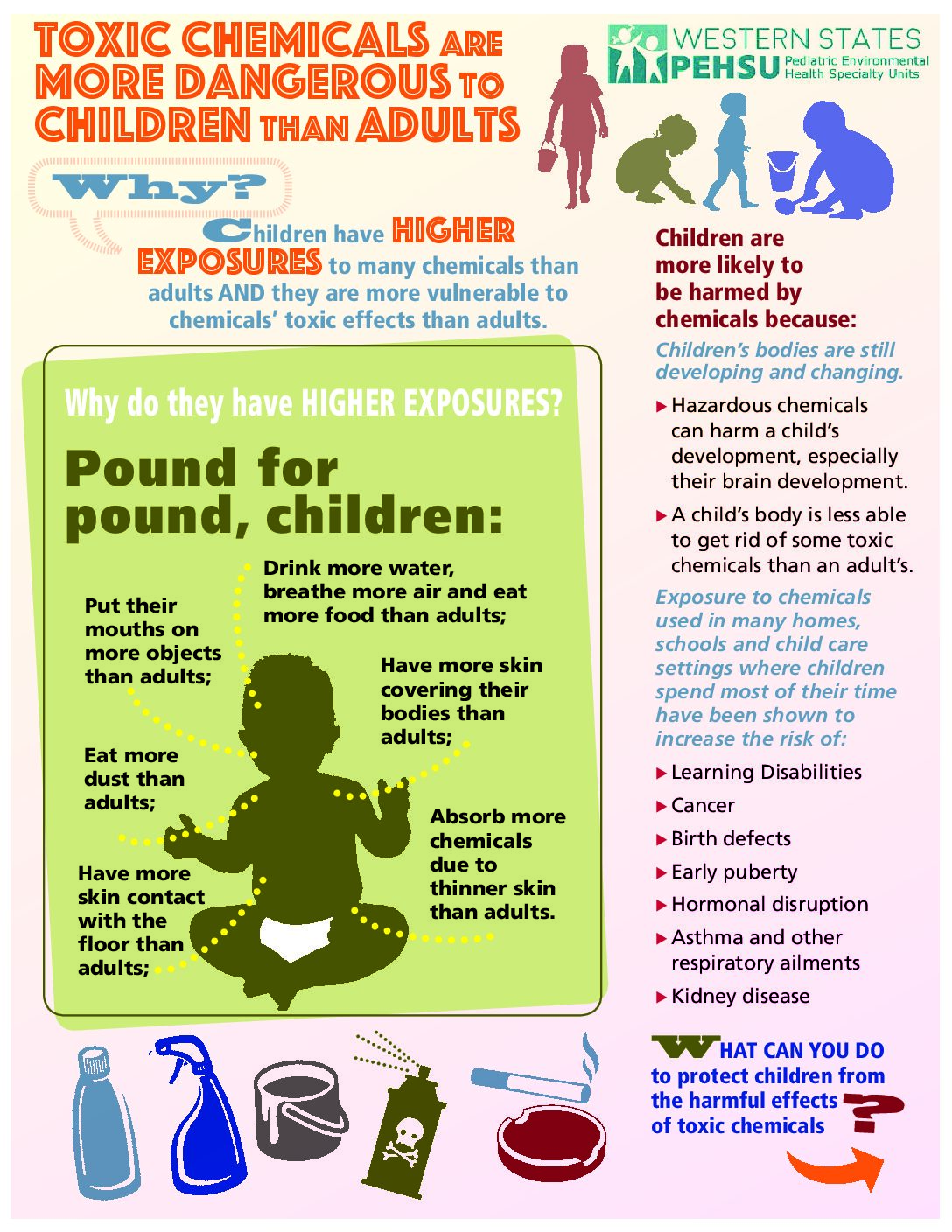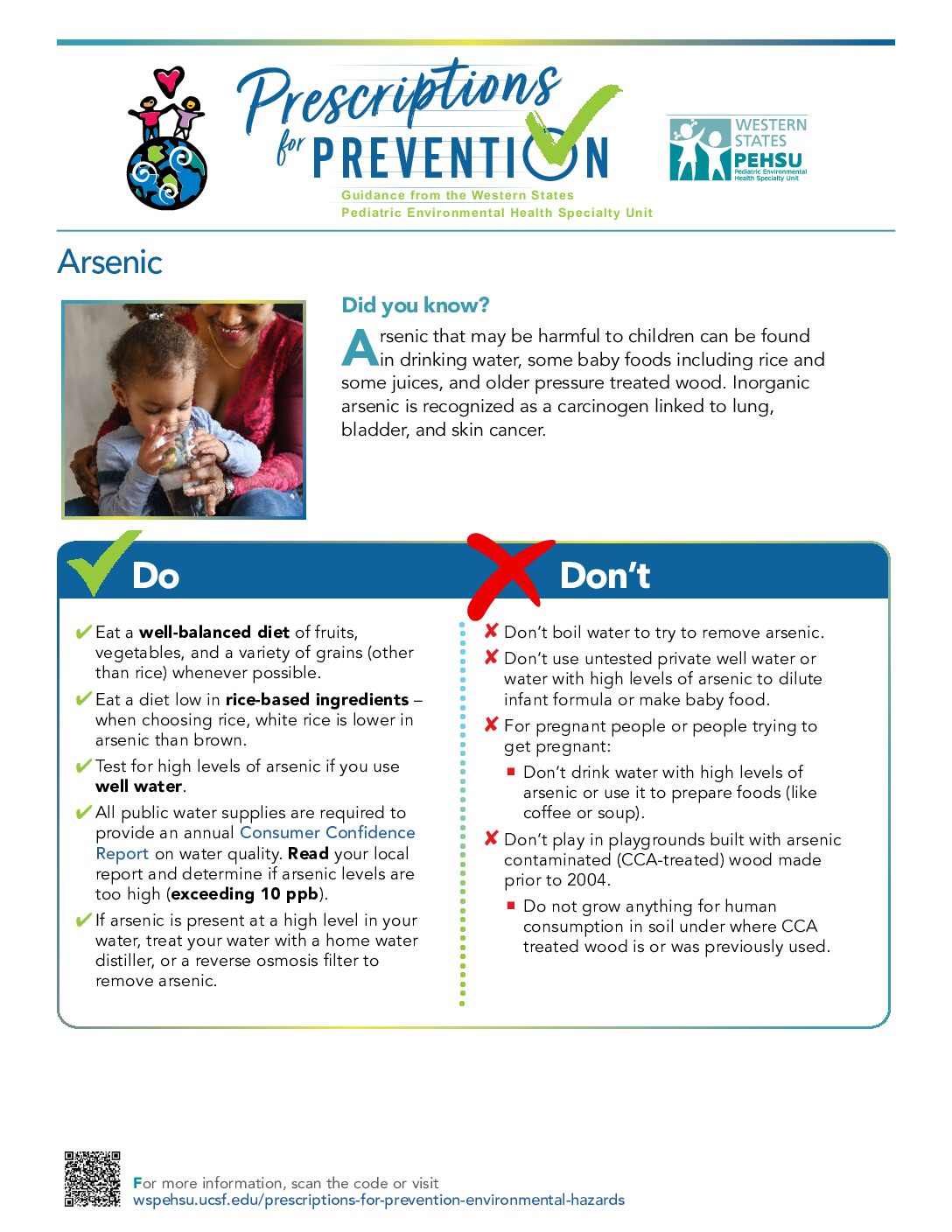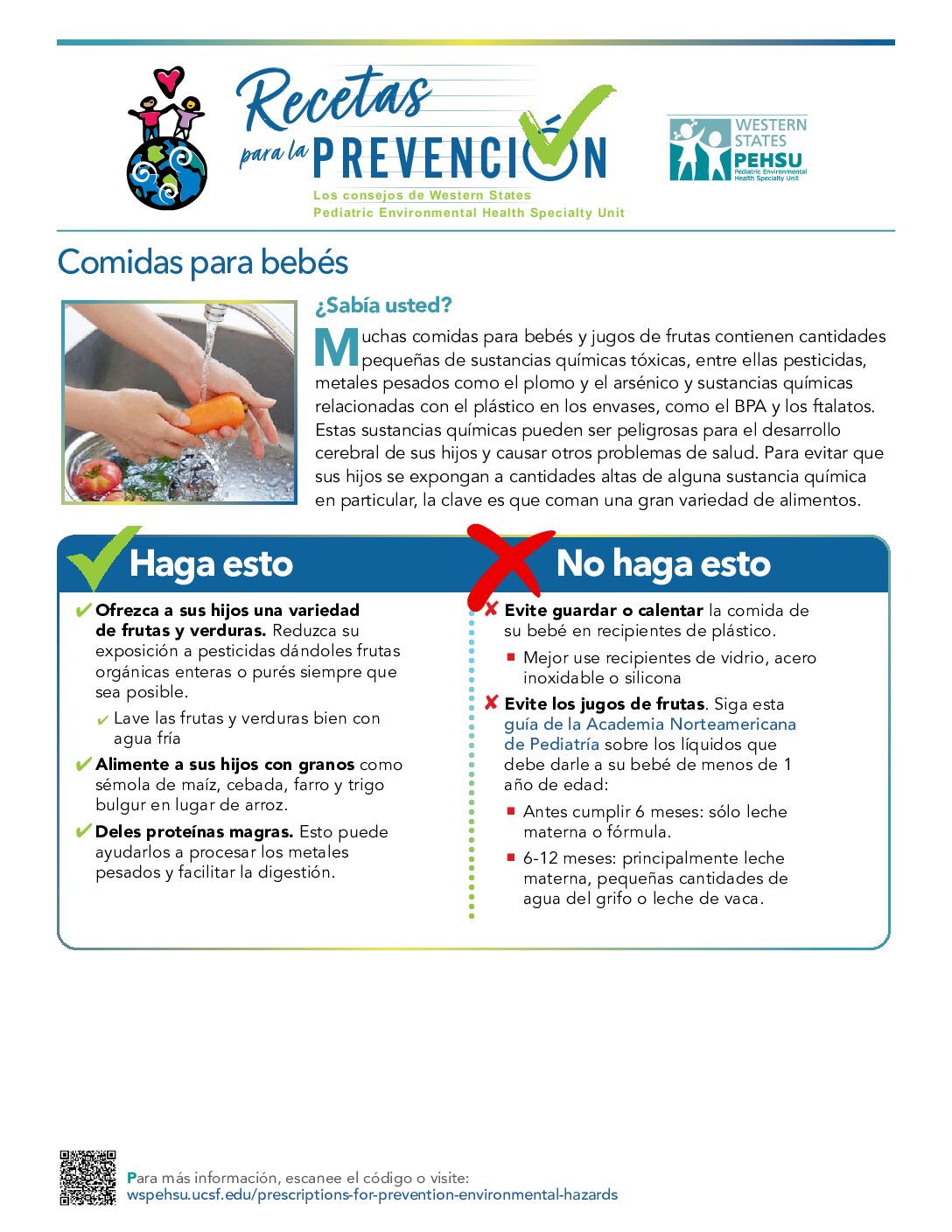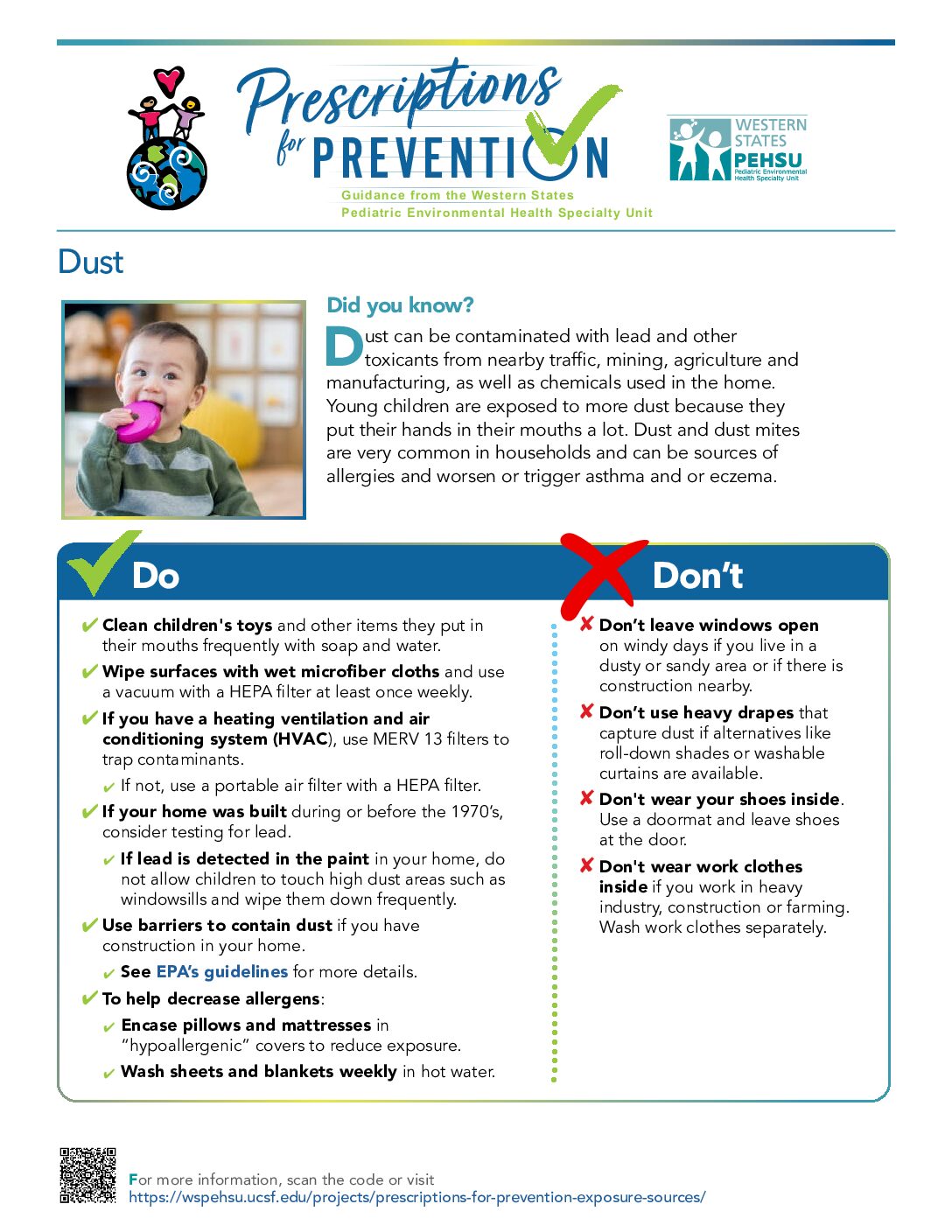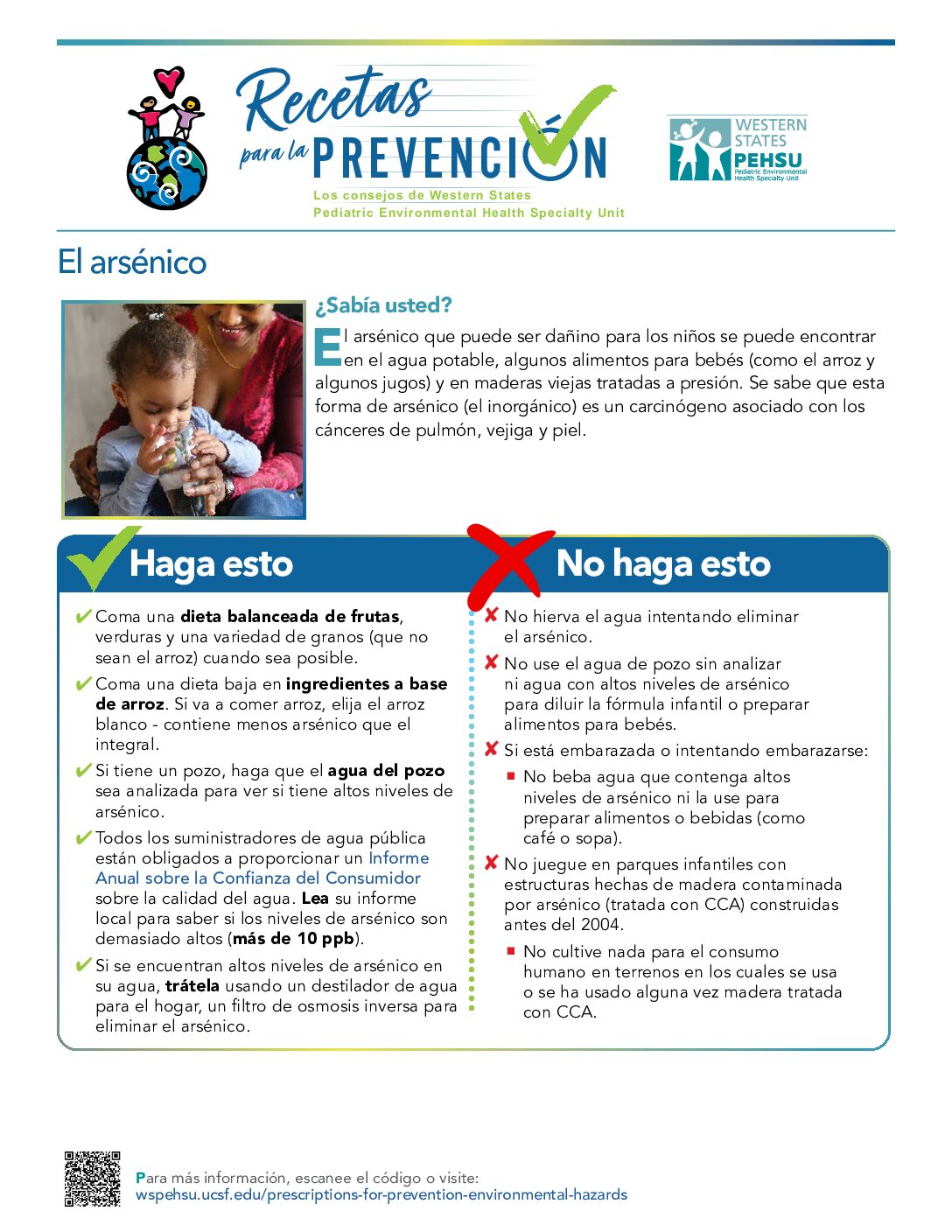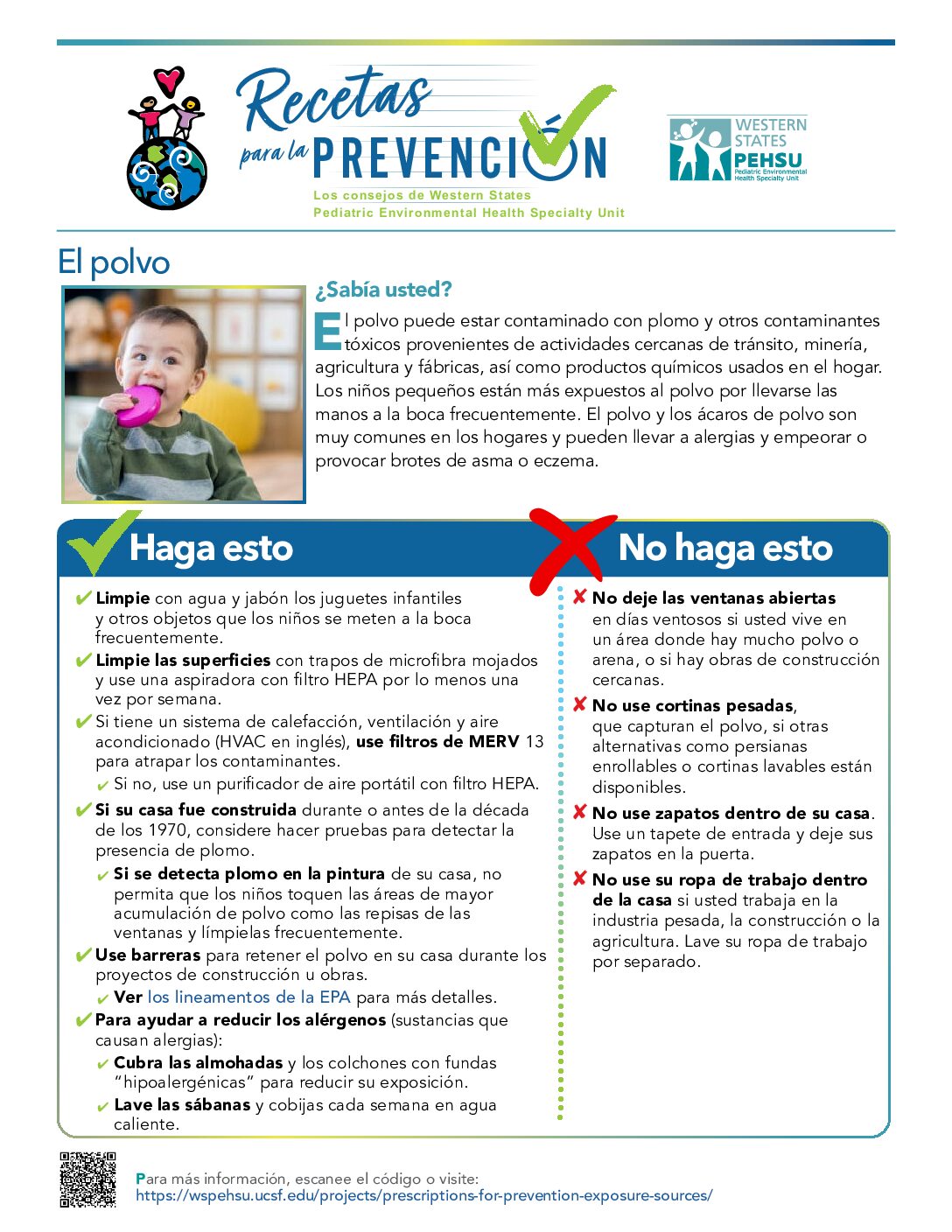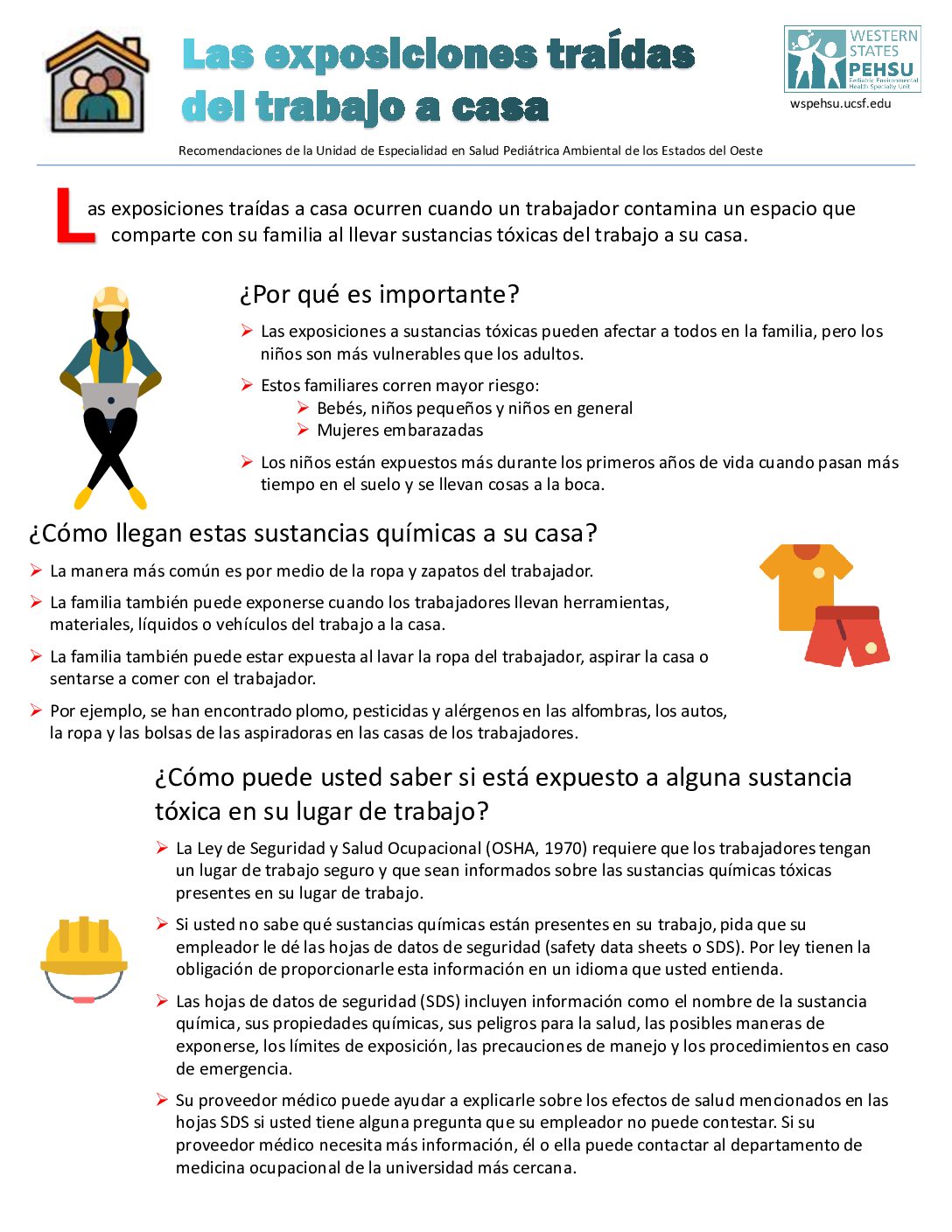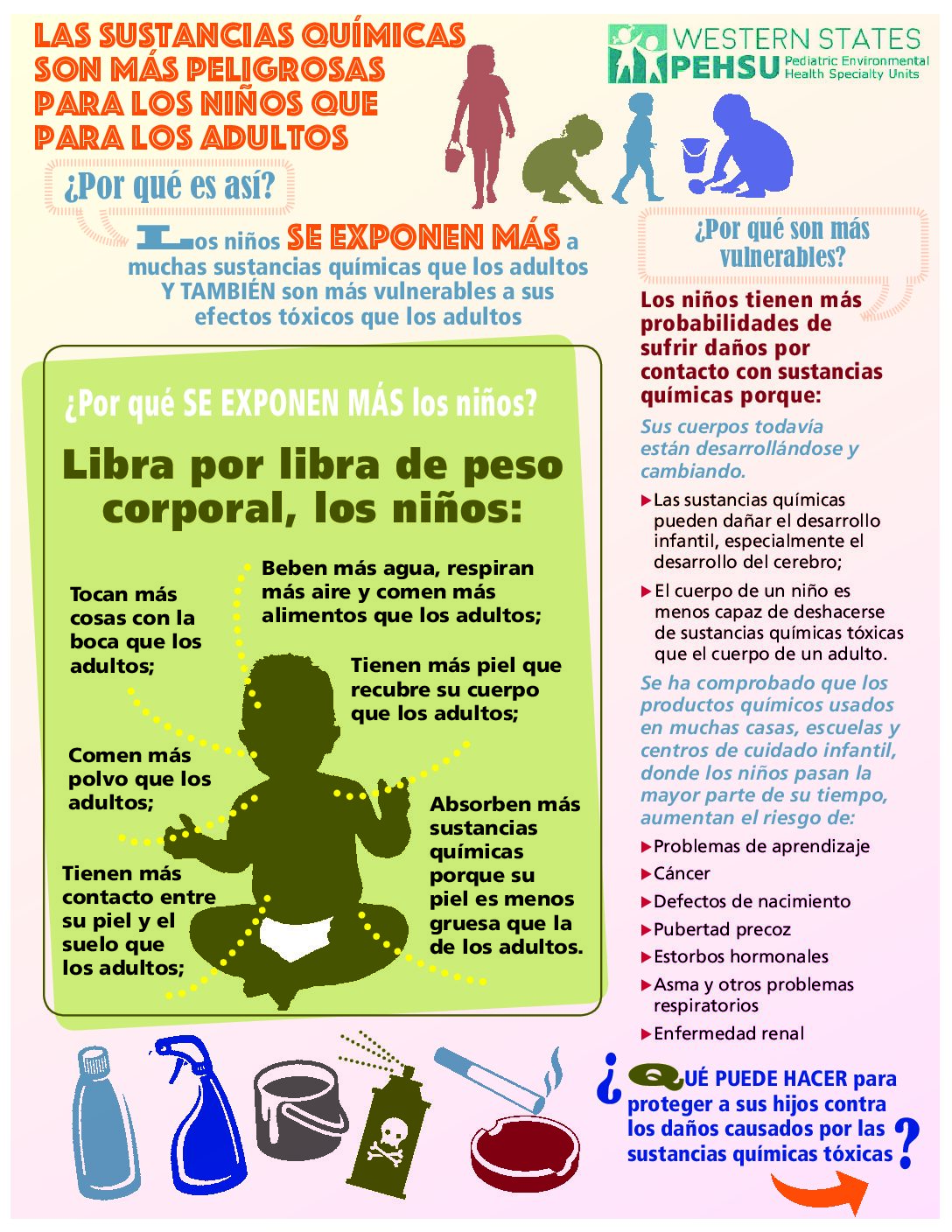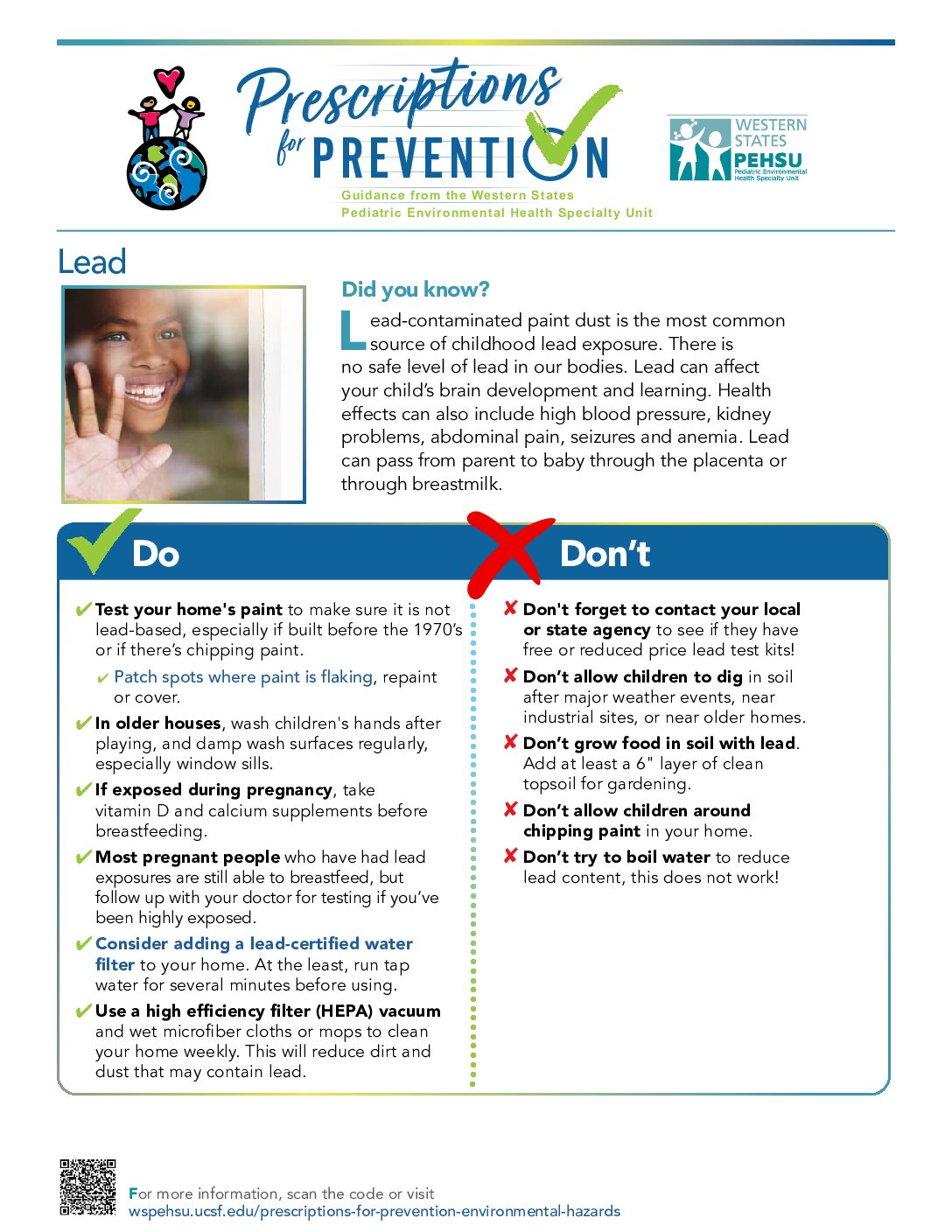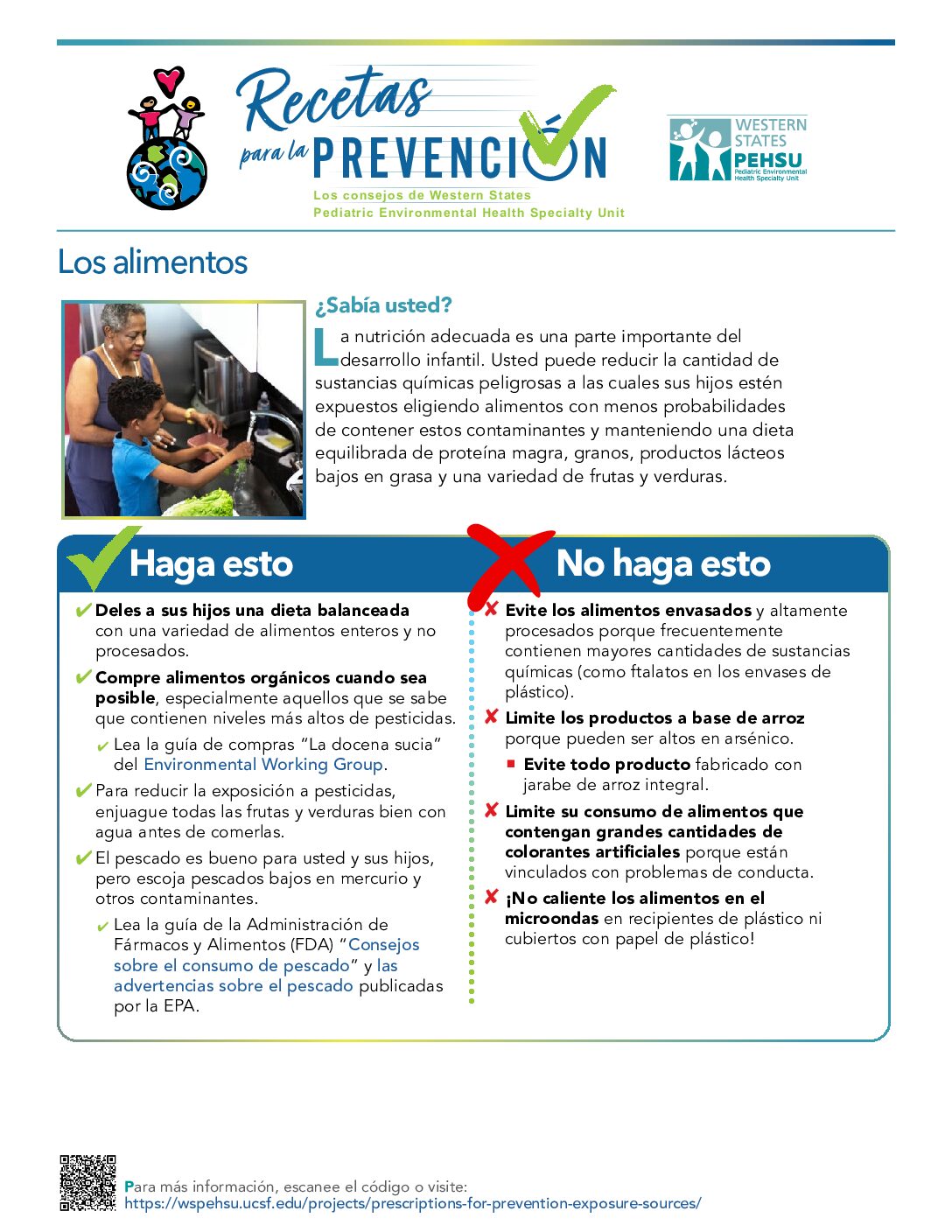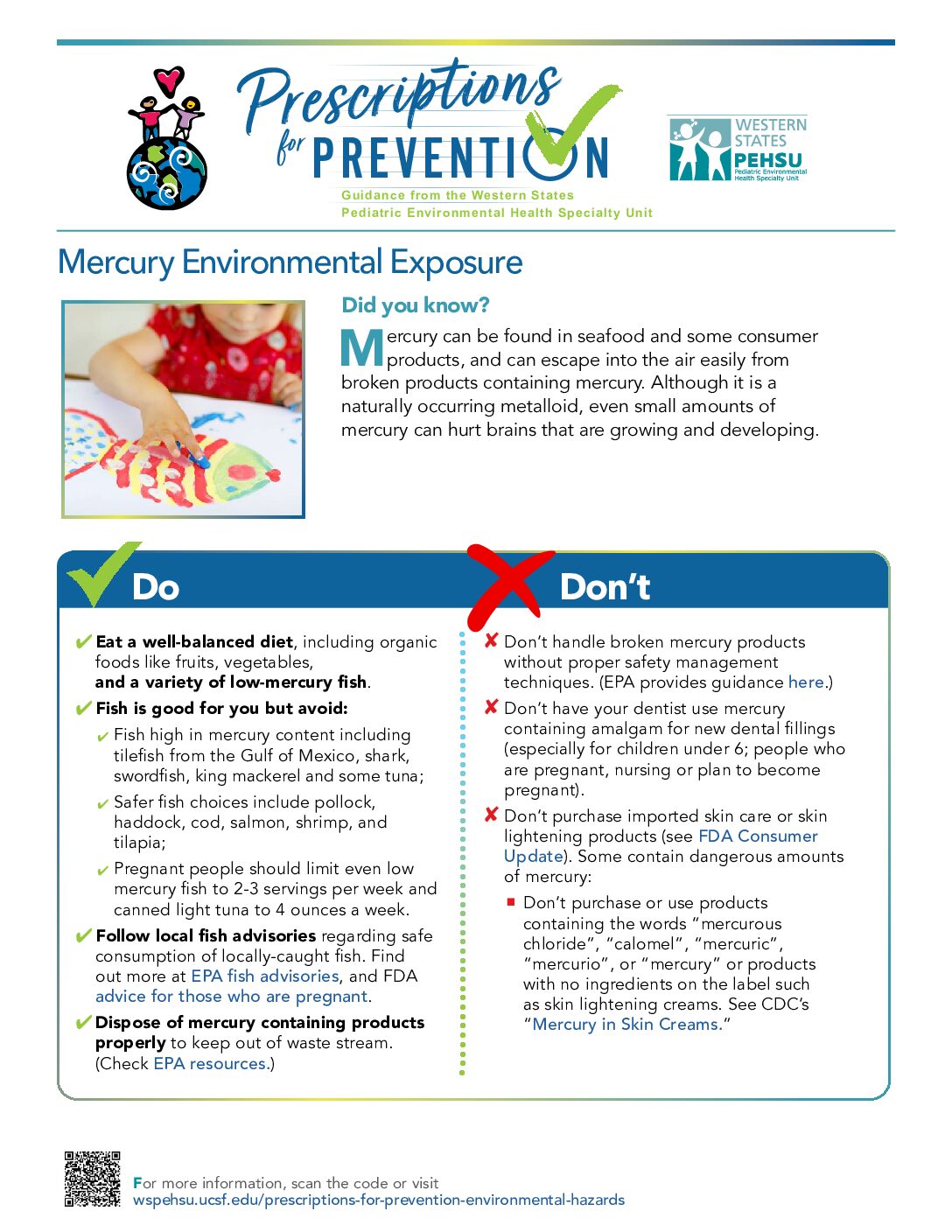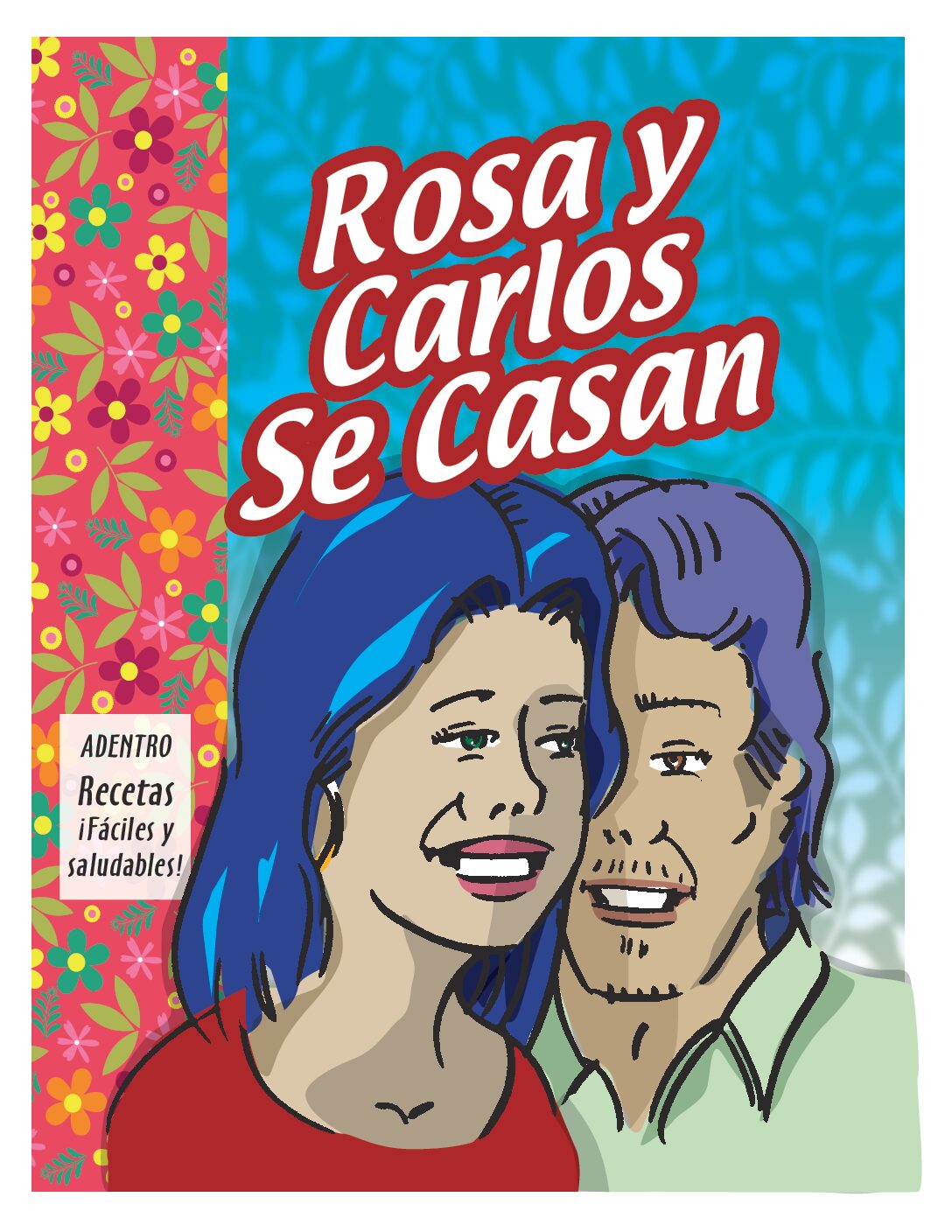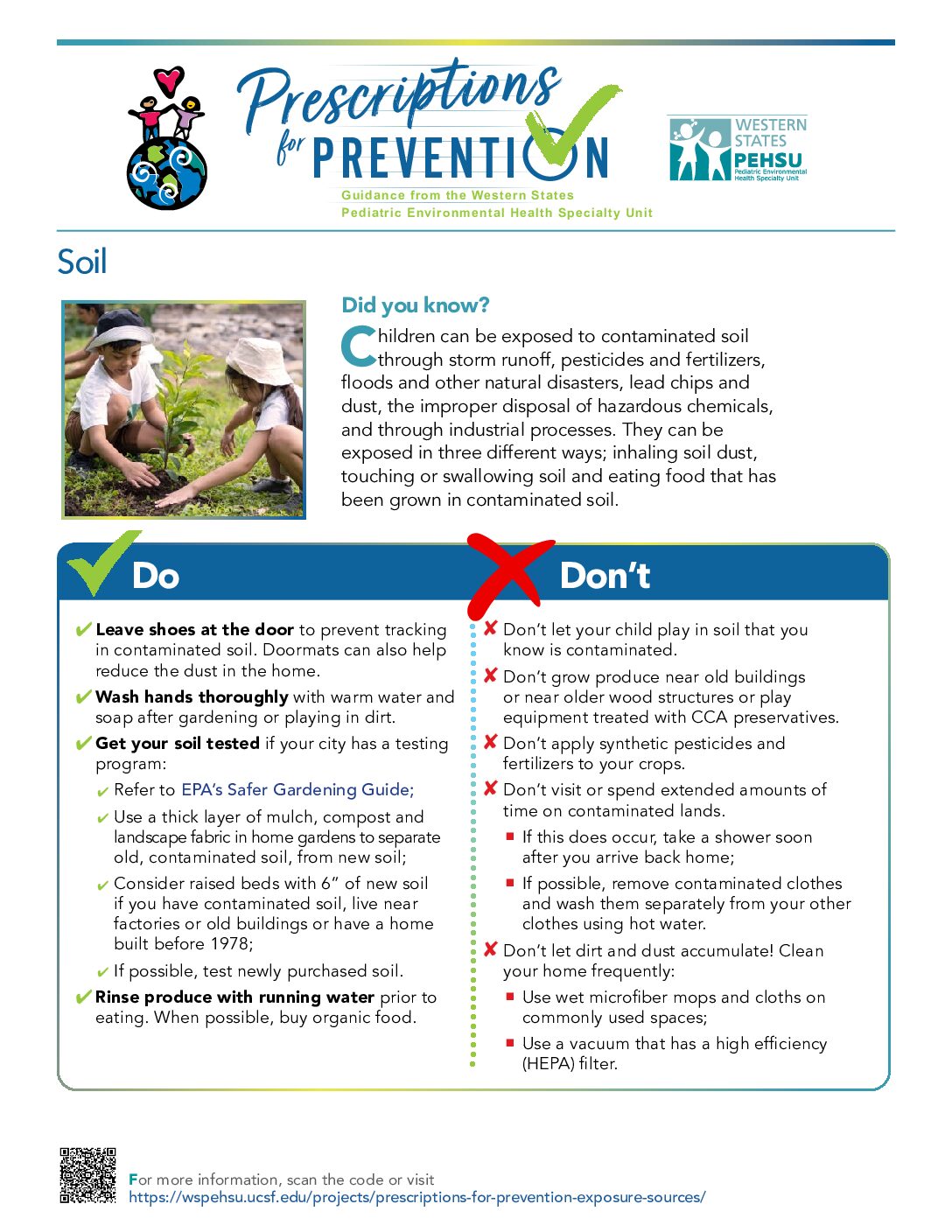Reducing Childhood Lead Poisoning in Immigrant Communities from Imported Makeup
We’ve seen an increase in lead poisoning among immigrant children in our region from use of lead containing imported makeup. In response, the Western States PEHSU has developed a set of fact sheets on the risks of using these makeup products on children. They are available in seven languages. Each has an English version on the back, and is tailored to the relevant language speakers. If you are interested in using these fact sheets in your work with children, there is a space where you can add your logo and contact information. Please contact us for more information.
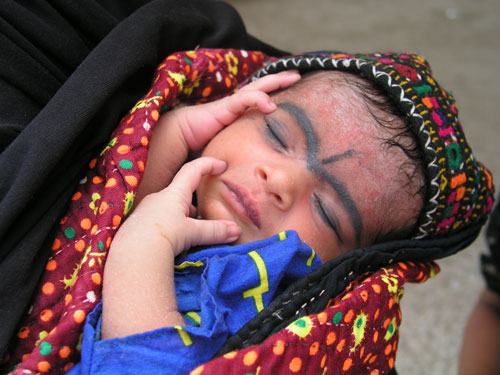
Lead Poisoning Resources
This educational comic follows the story of Carlos and Rosa as they learn about the dangers of environmental exposures, potential health impacts, and practical steps families can take to reduce exposure in their homes and communities.
This bilingual document addresses the risks associated with surma and suggests methods to minimize exposure.
This document discusses how workplace contaminants can be transported home and offers preventive strategies.
This document explores common toxic exposures, their health impacts, and strategies for reducing risks.
Heavy Metal Resources
This document addresses arsenic exposure, its sources (such as contaminated water and certain foods), health effects, and preventive strategies to minimize risk. It emphasizes the importance of testing water sources and being aware of dietary intake.
Este folleto advierte sobre la presencia de metales pesados en alimentos para bebés y proporciona consejos para reducir riesgos.
Dust: This factsheet addresses the health risks associated with household dust, which can contain harmful contaminants, and recommends cleaning practices to minimize exposure, especially for children.
Este documento aborda los efectos del arsénico en la salud, sus fuentes comunes y formas de reducir la exposición en agua y alimentos.
Este folleto aborda los contaminantes presentes en el polvo doméstico y cómo reducir la exposición, especialmente en niños.
Este documento aborda los riesgos de la exposición al mercurio, sus fuentes comunes y cómo minimizar los peligros para la salud.
Este folleto explica cómo los contaminantes pueden ser llevados del lugar de trabajo al hogar y cómo prevenir esta exposición.
Este documento aborda las exposiciones tóxicas comunes, sus efectos en la salud y las estrategias para reducir los riesgos.
This document provides comprehensive information on the sources of lead exposure, its health effects, and strategies for prevention, emphasizing the importance of public health measures to reduce lead-related risks.
Este folleto aborda las preocupaciones de seguridad alimentaria relacionadas con contaminantes químicos y ofrece consejos para minimizar la exposición.
Baby Food: This factsheet highlights concerns about heavy metals in baby foods and recommends feeding children a variety of fruits and vegetables, choosing products tested for contaminants, and preparing fresh foods when possible to minimize exposure.
Este cómic educativo narra la historia de Óscar y Lisa mientras aprenden sobre los peligros de la exposición al plomo, sus posibles impactos en la salud y los pasos prácticos que las familias pueden tomar para reducir la exposición en sus hogares y comunidades.
This document addresses health risks from contaminated soil, especially for children and gardeners, and offers tips for safe gardening practices.
“My daughter was poisoned by kohl. We couldn’t even tell she was sick. A doctor tested her blood for lead. I thought kohl was healthy because it is natural. Now I know it has lead, which hurts children.”
- Refugee Mother
More Lead Resources
- California Department of Public Health – Childhood Lead Poisoning Prevention Branch
The California Department of Public Health, Childhood Lead Poisoning Prevention Branch, provides free educational materials for providers to give to patients and families, and free informative guidelines and fact sheets for providers and staff. - Early Adopters: State Approaches to Testing School Drinking Water for Lead in the United States
This report describes the features of statewide initiatives in operation between January 1, 2016 and February 28, 2018 in 24 states and the District of Columbia to conduct testing for lead in school drinking water, and the prevalence of elevated lead concentrations in tap water in public schools based on available data. - Persistent Poison: Lead’s Toxic Legacy in the Bay Area
There are neighborhoods in the Bay Area that have higher rates of childhood lead poisoning than Flint, Michigan — where a recent lead-poisoning crisis made national news. To learn more about this ongoing public-health crisis, KALW News environment and health reporters Angela Johnston and Marissa Ortega-Welch spent more than a year sifting data, conducting interviews, chasing down public records, and going into the field. The Western State’s PEHSU’s Dr. Timur Durrani consulted on this series. - Eliminating Lead in Schools and Child Care Facilities
This report proposes goals for reducing lead exposures in these settings, and calls for putting children first, through finding and eliminating lead before, not after, it harms children. Cleaning up these large-group settings offers great potential to prevent lead risks for significant numbers of children. - The Story of Lead in English and The Story of Lead in Spanish and The Mysterious Case of Lead in English and The Mysterious Case of Lead in Spanish.
The Southwest Center for Pediatric Environmental Health created four 5-minute animated videos, aimed at education about, and prevention of, lead poisoning.



